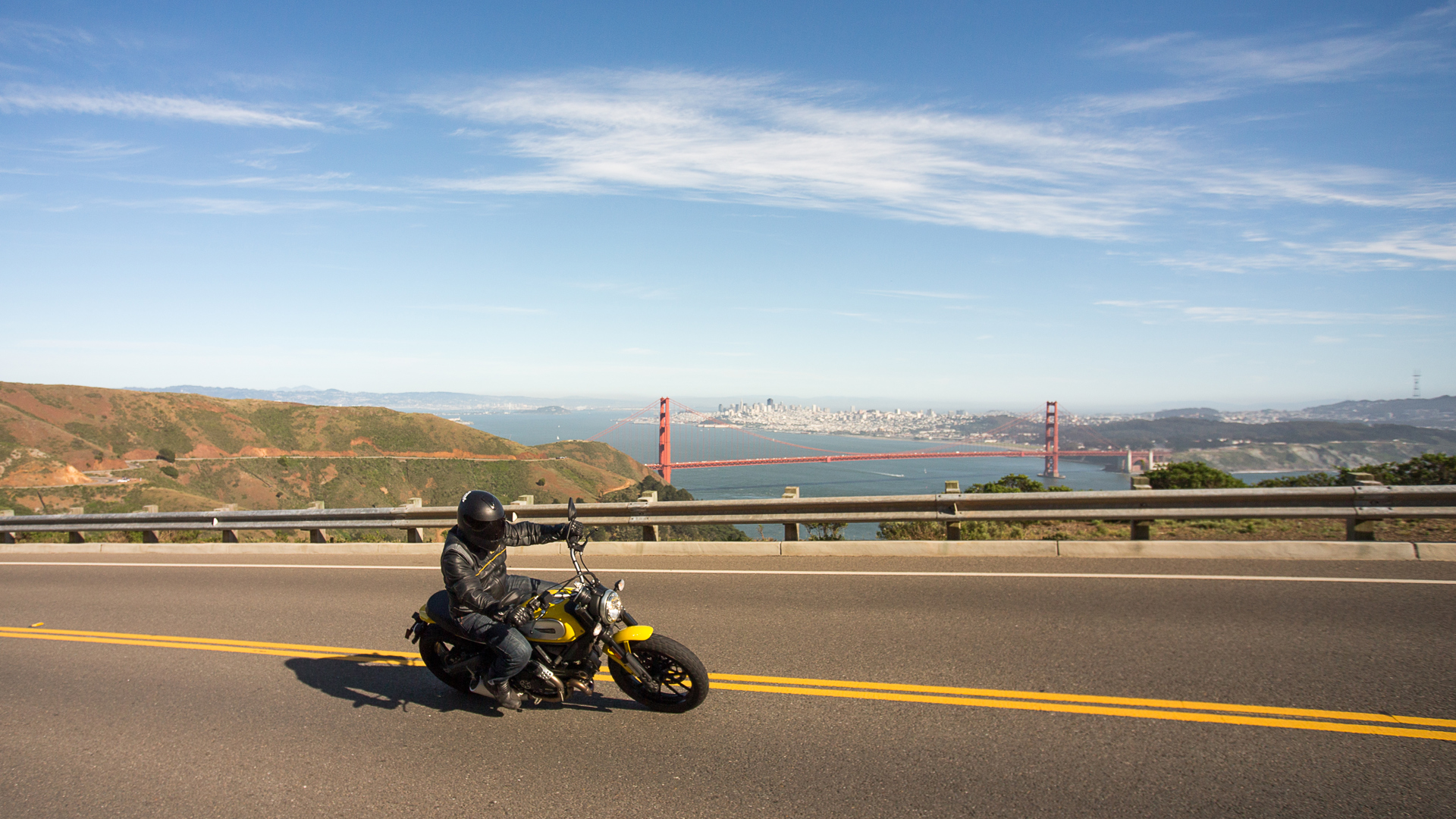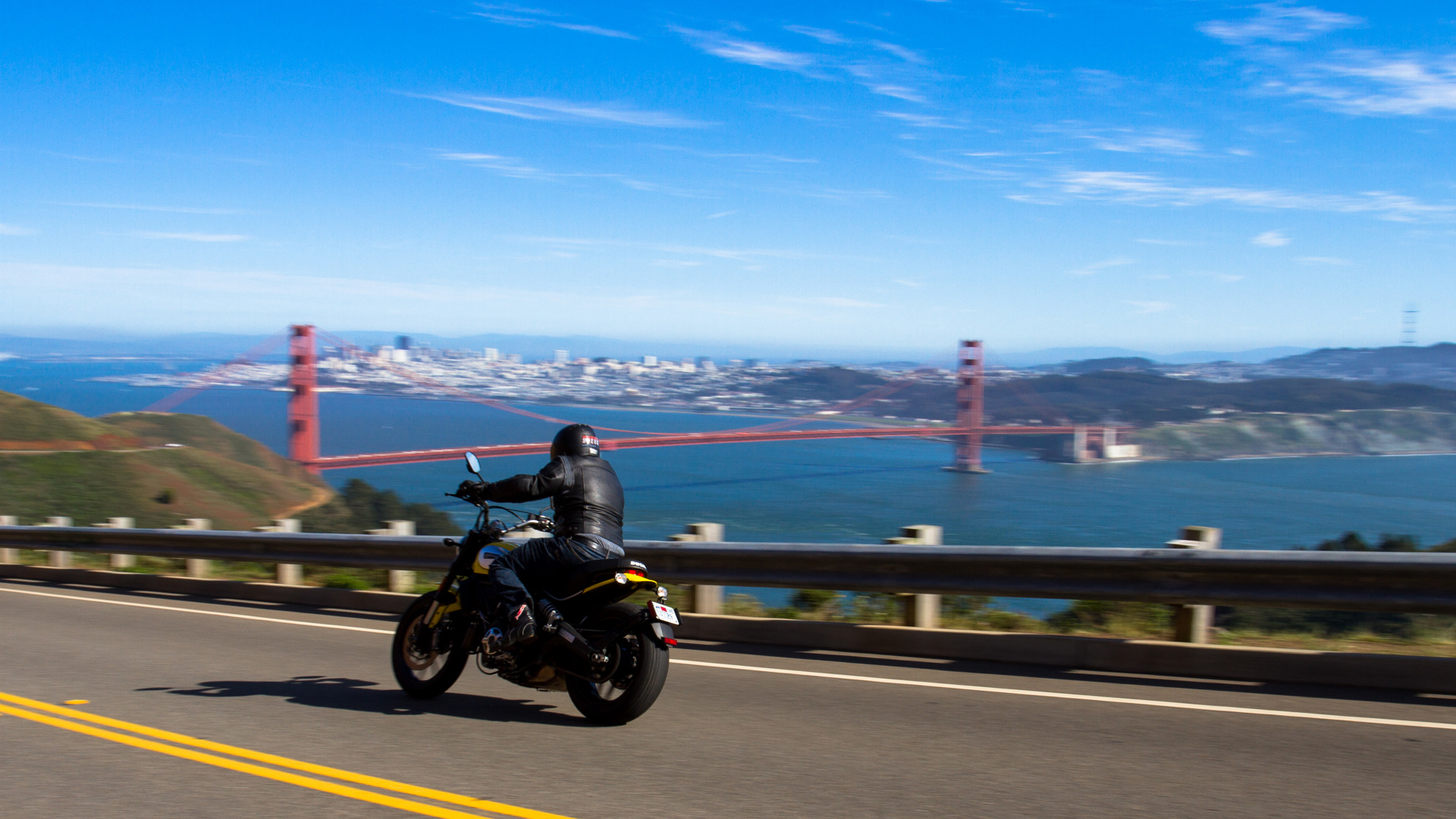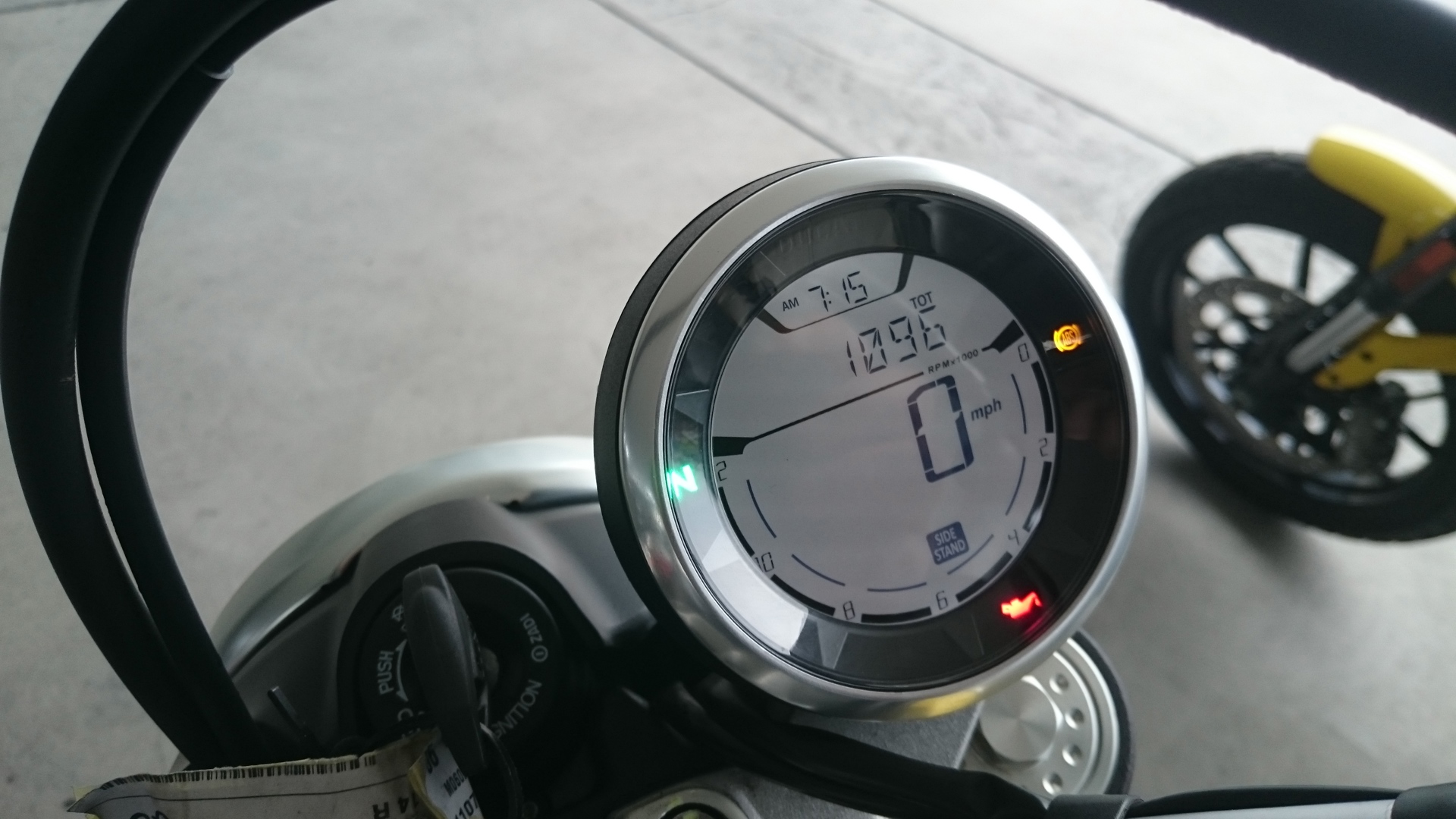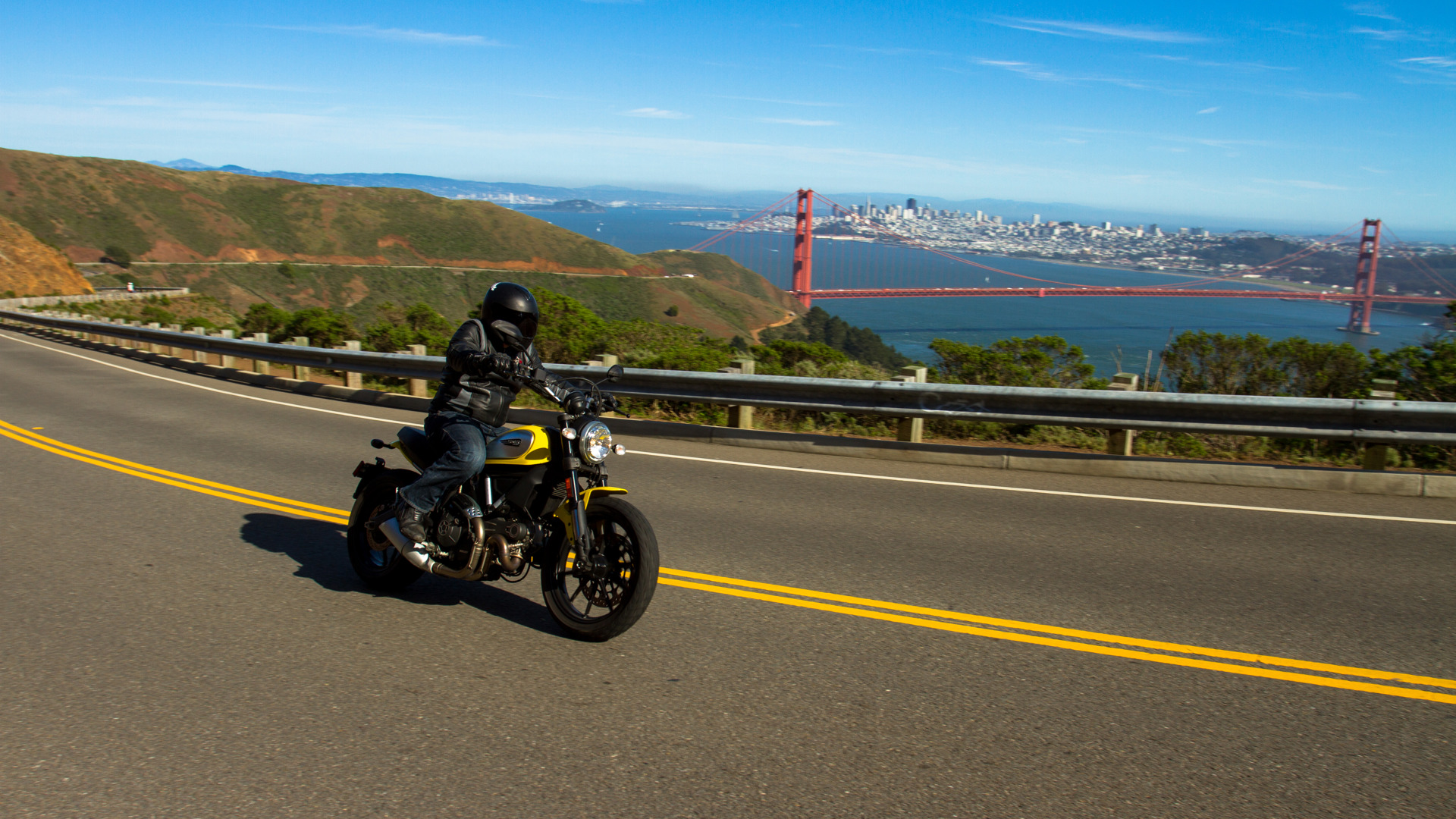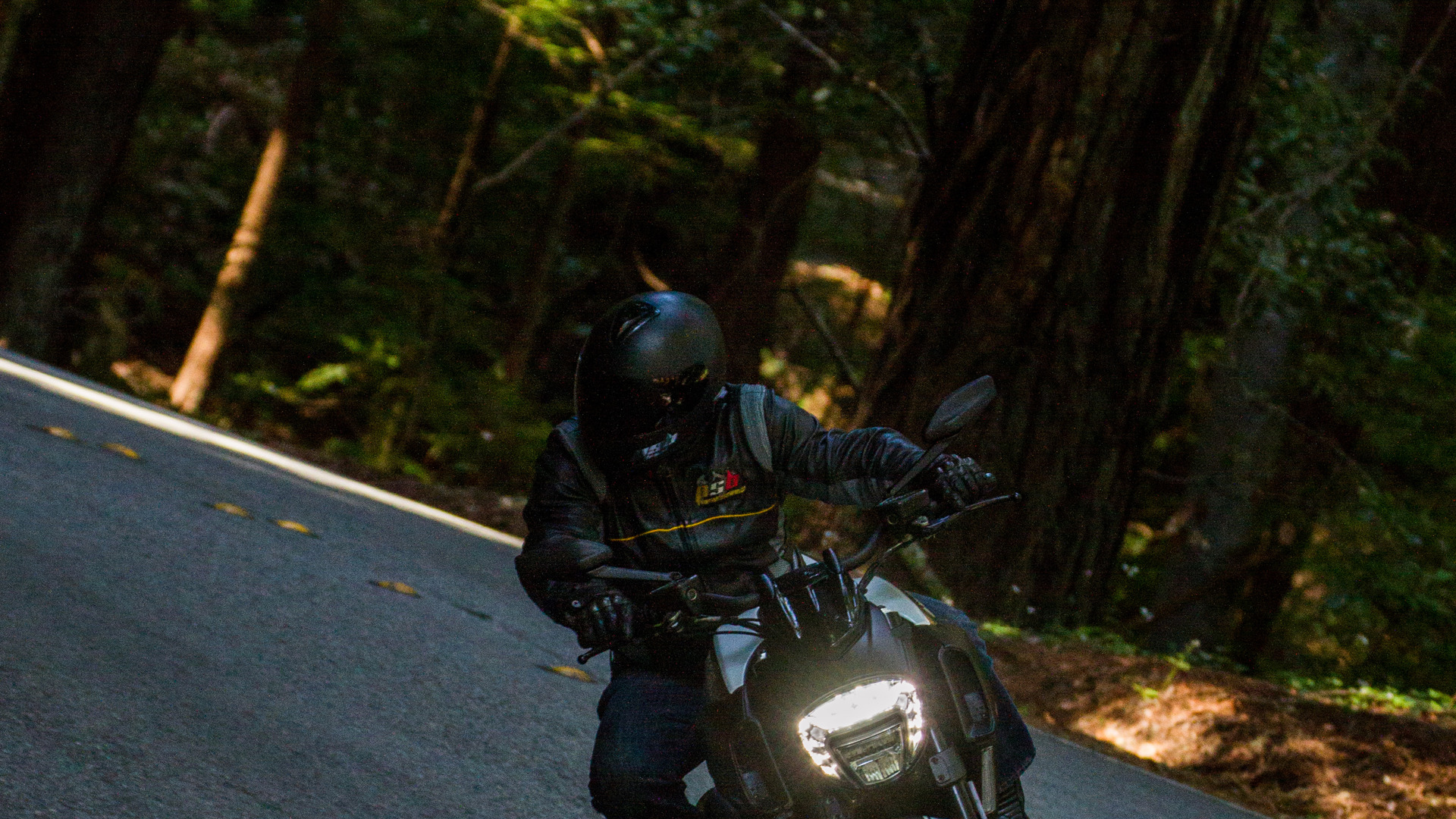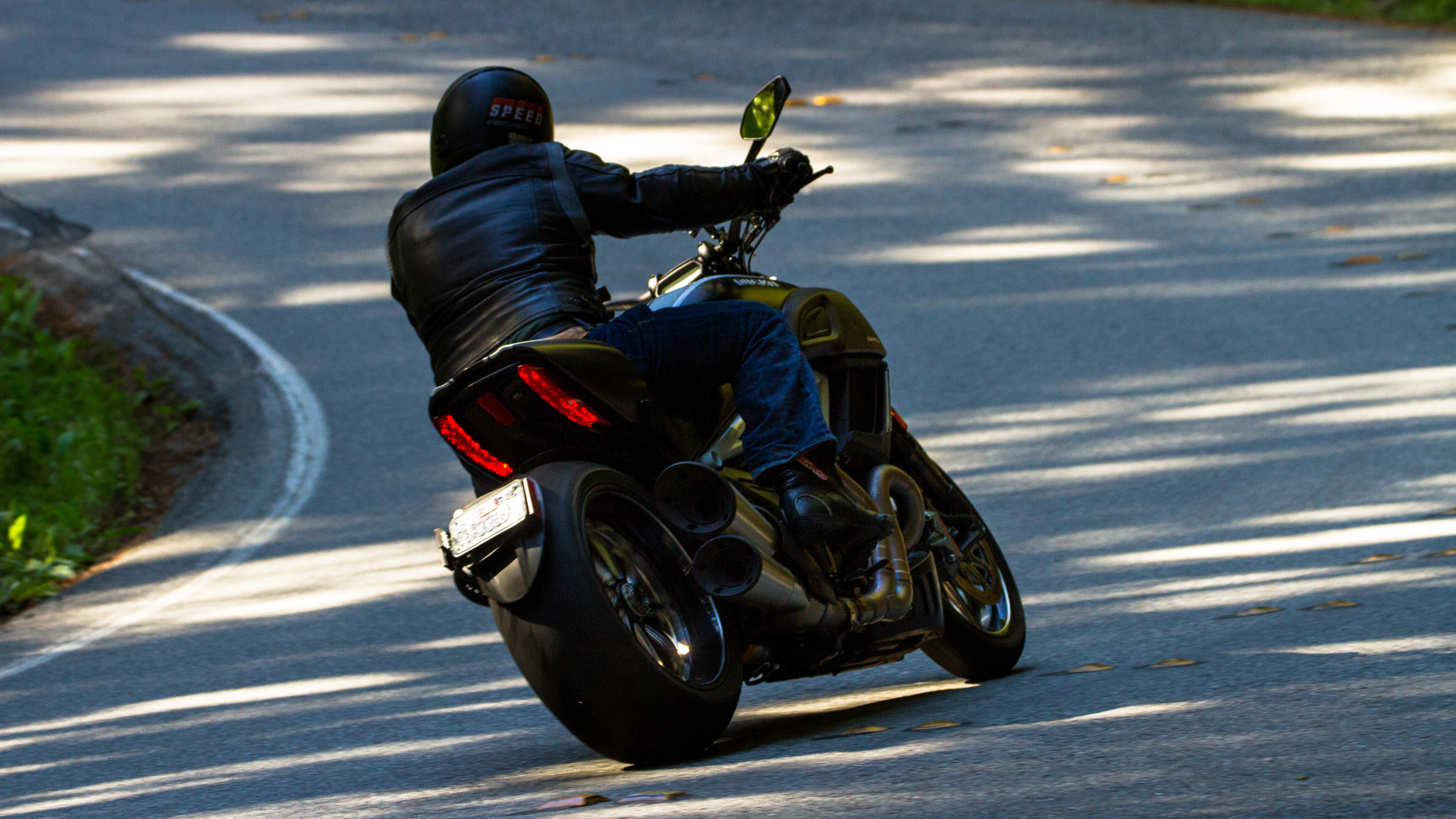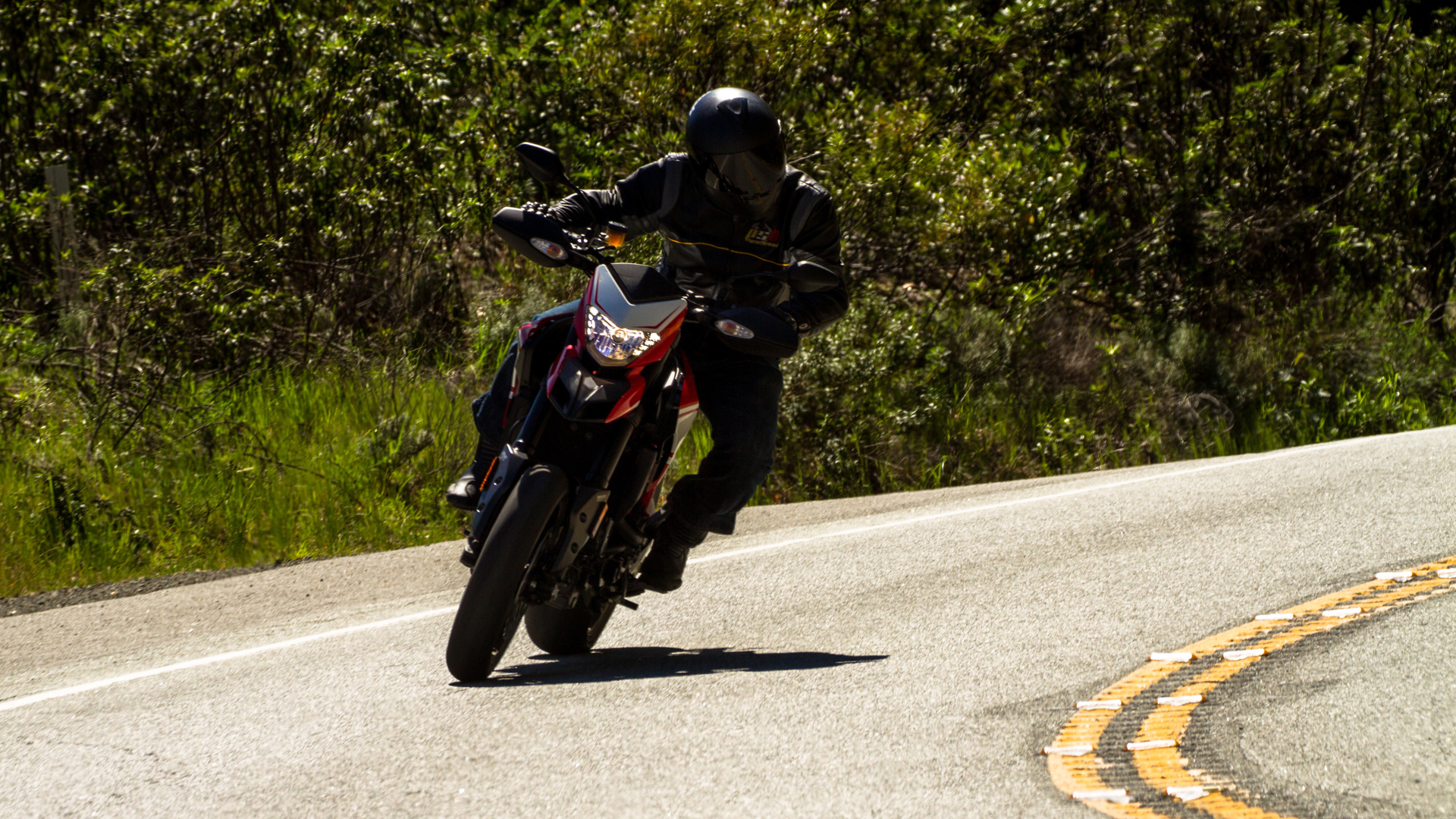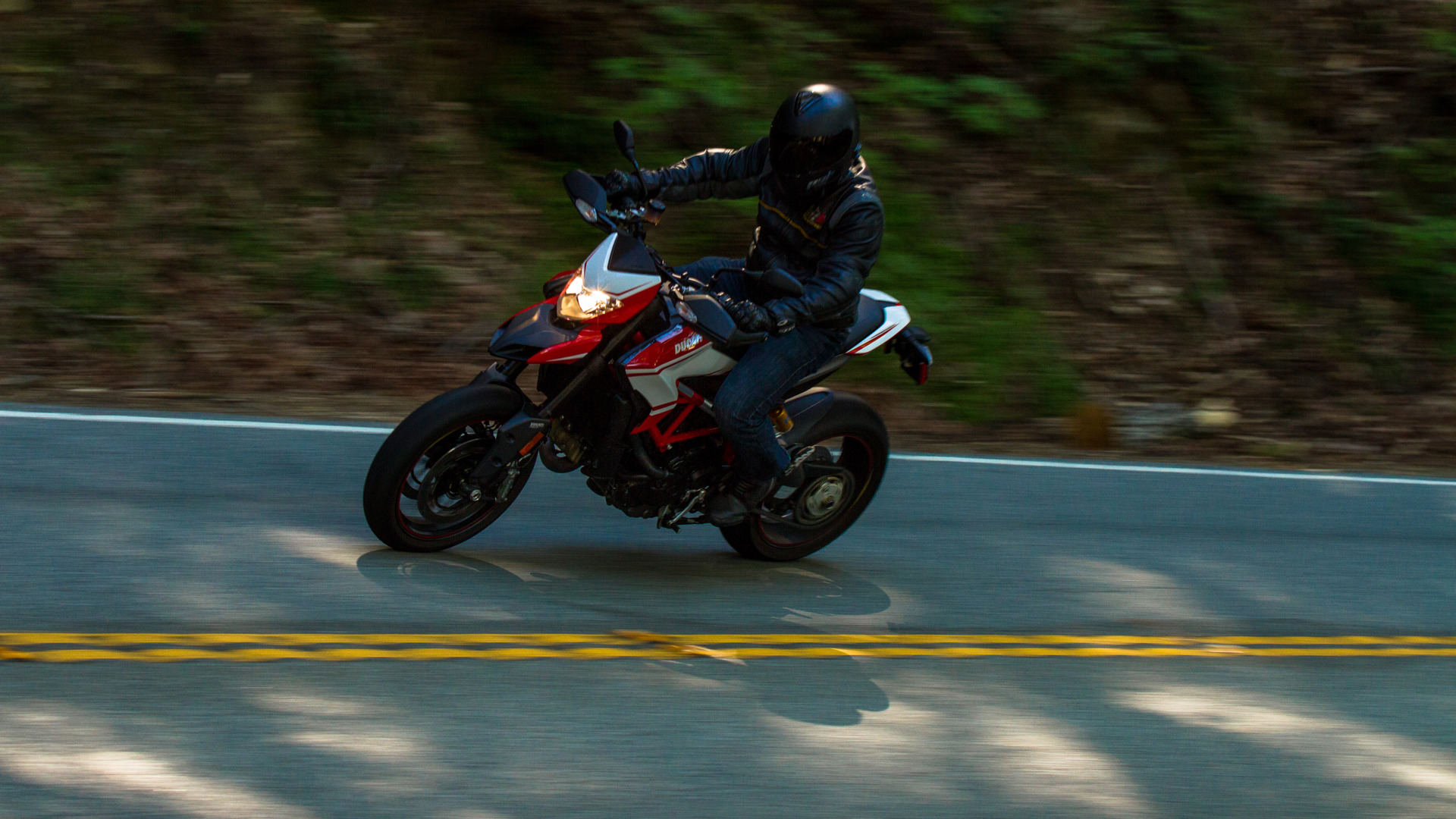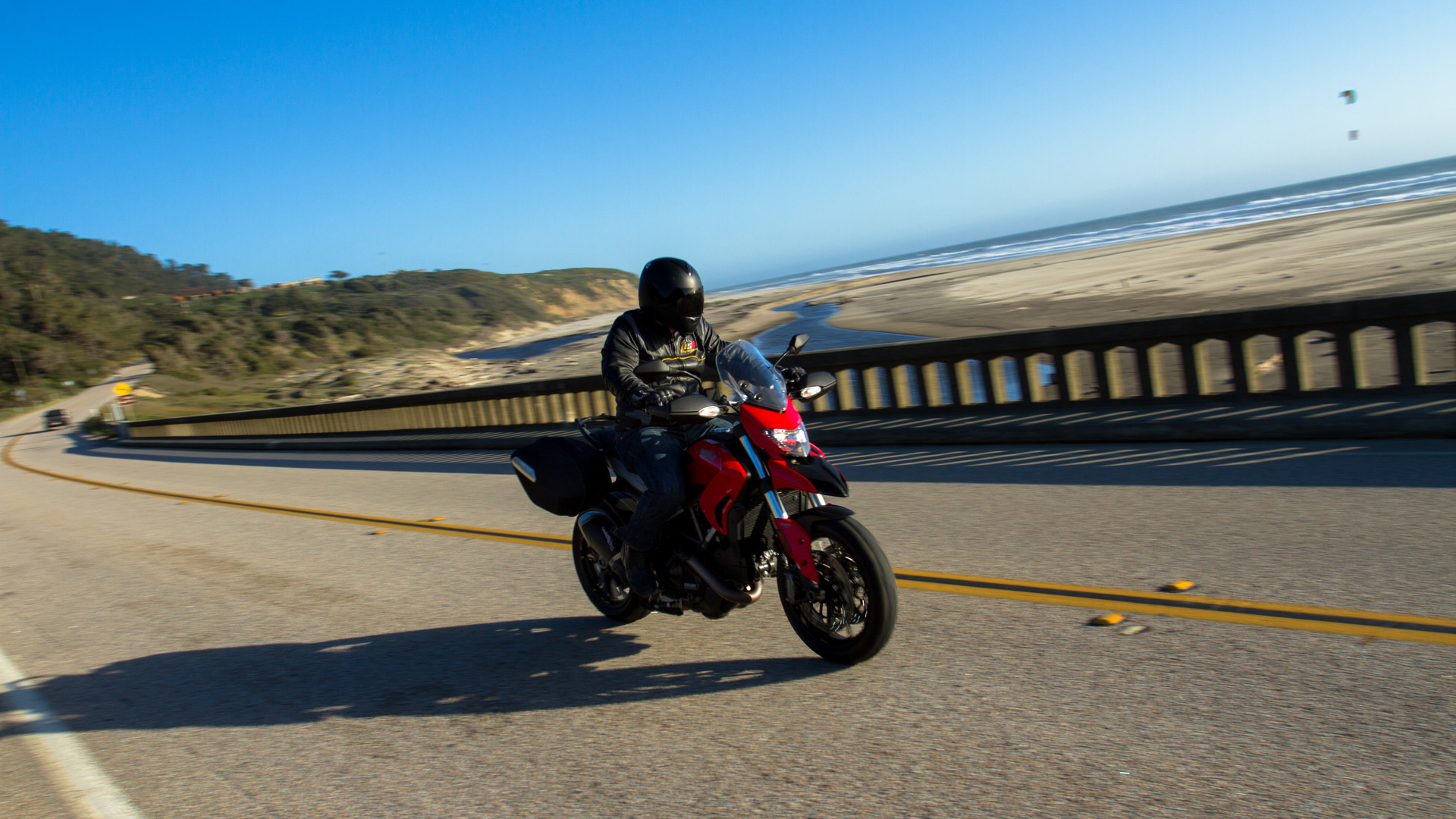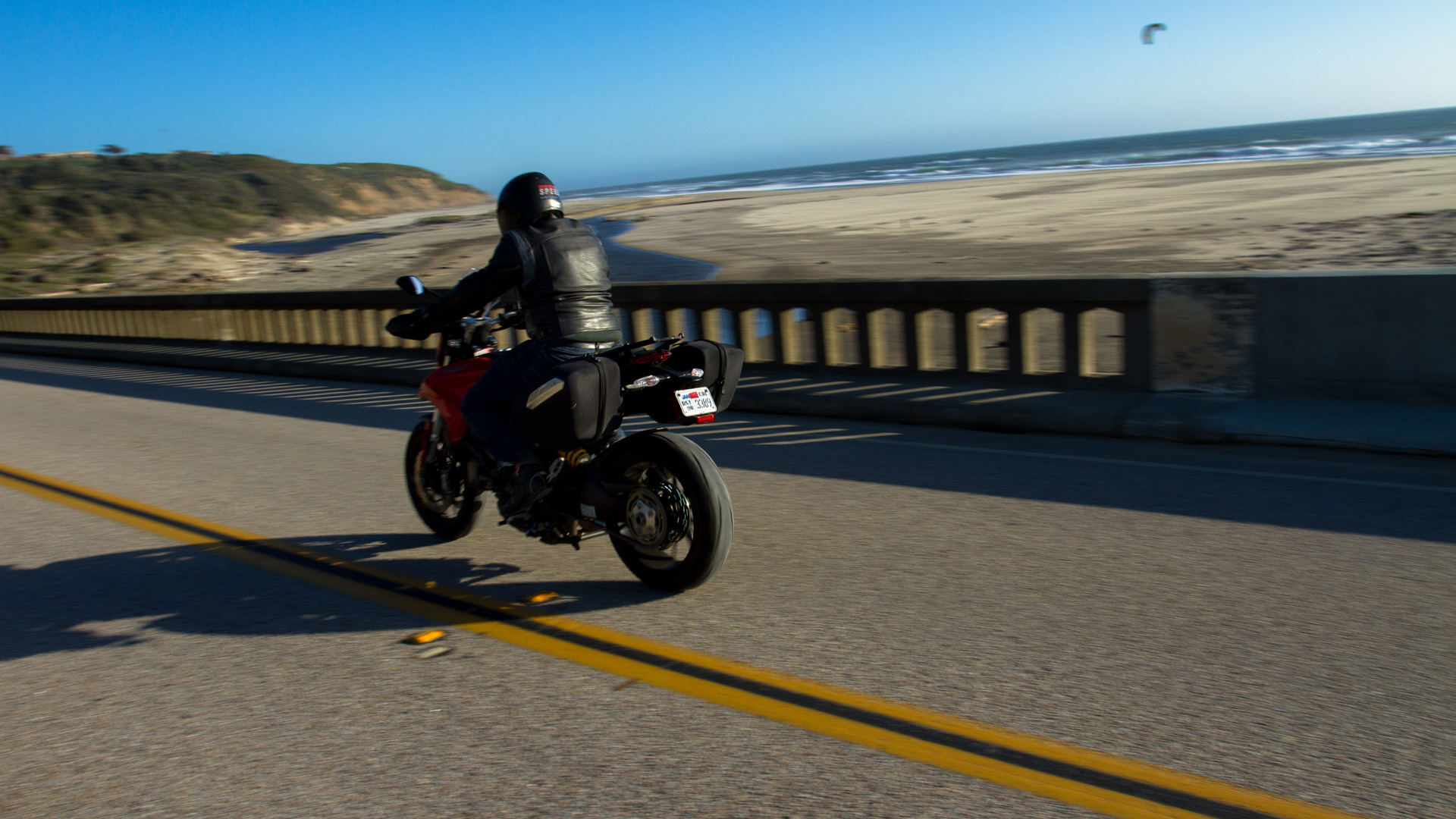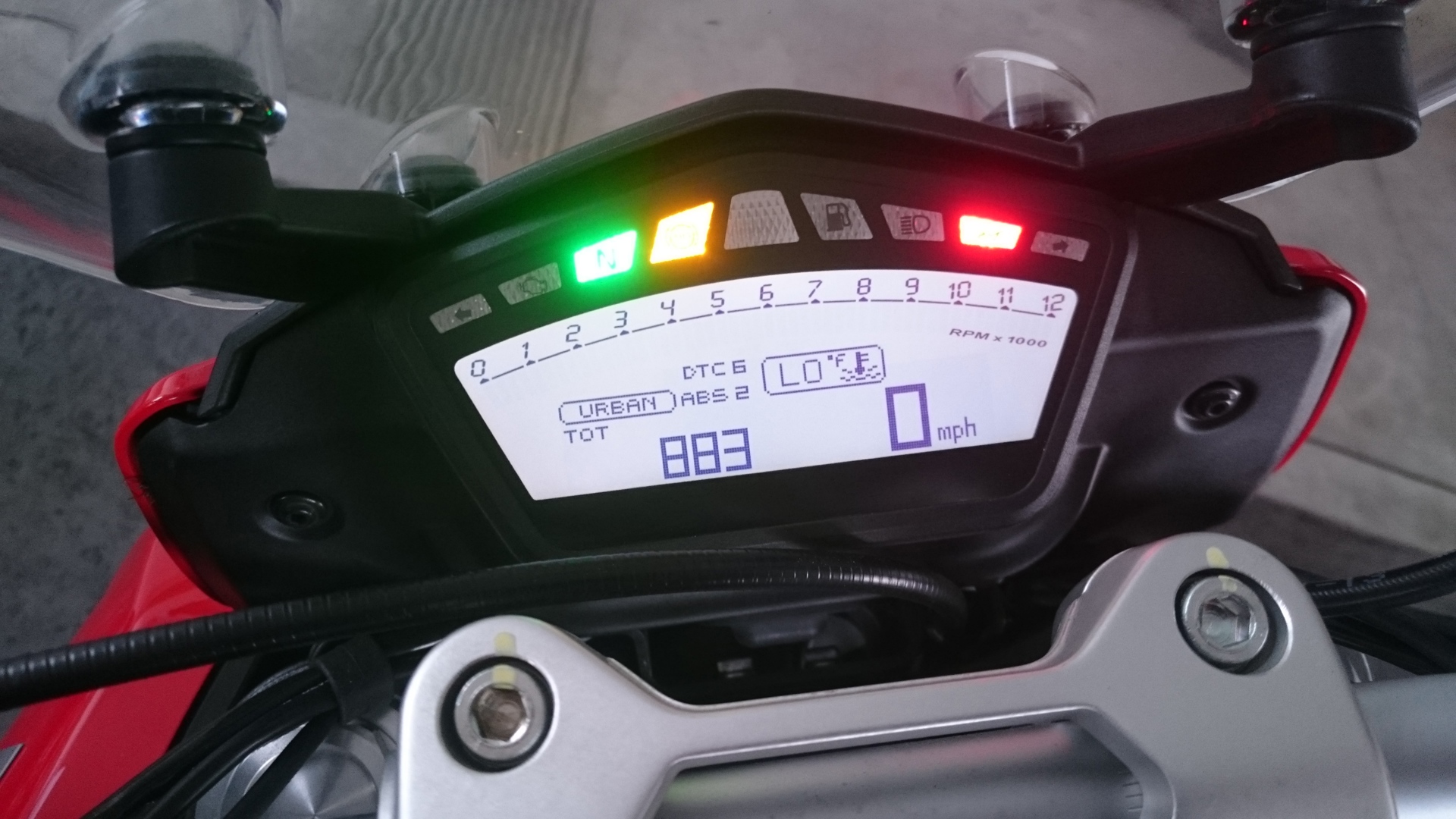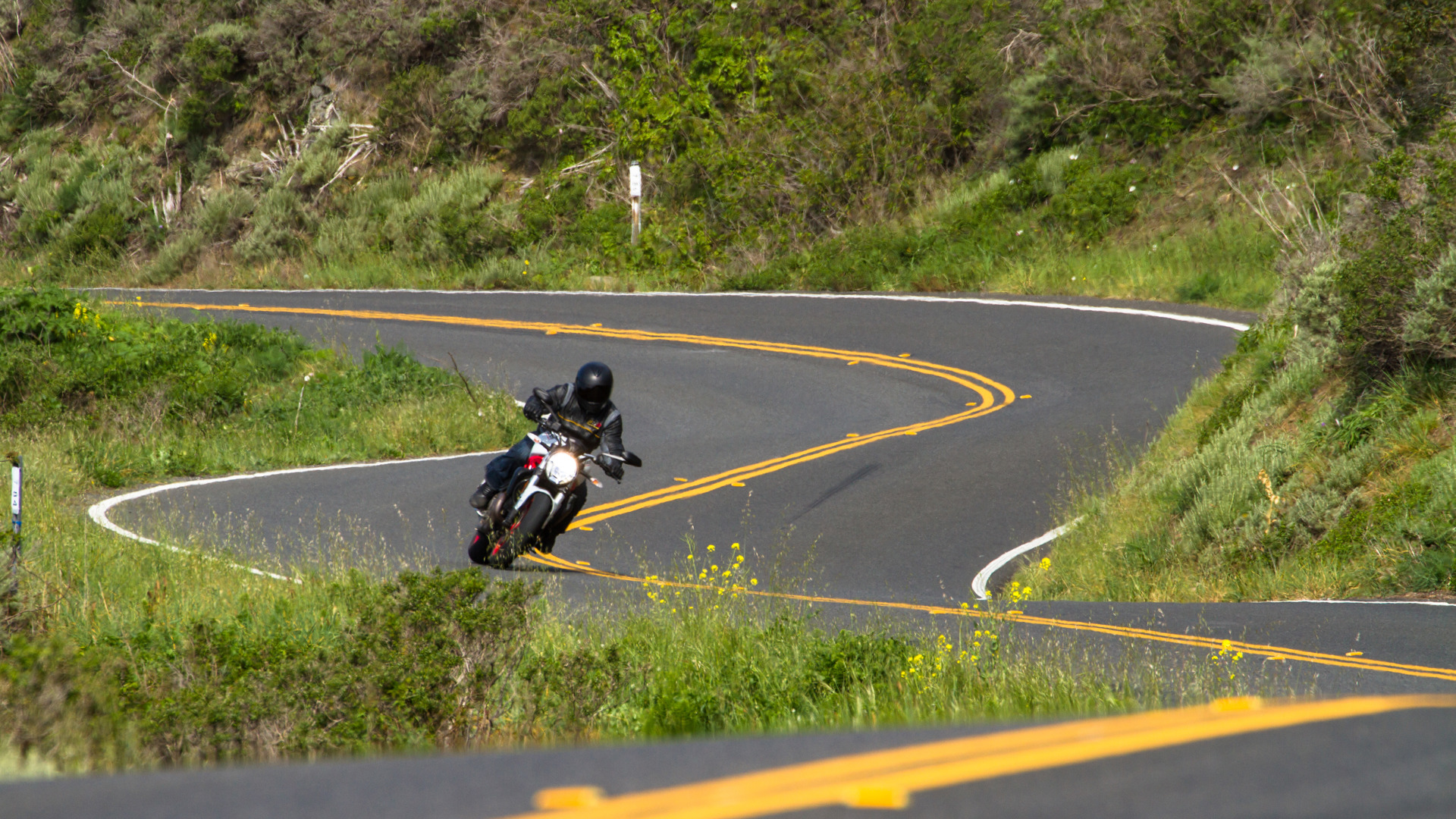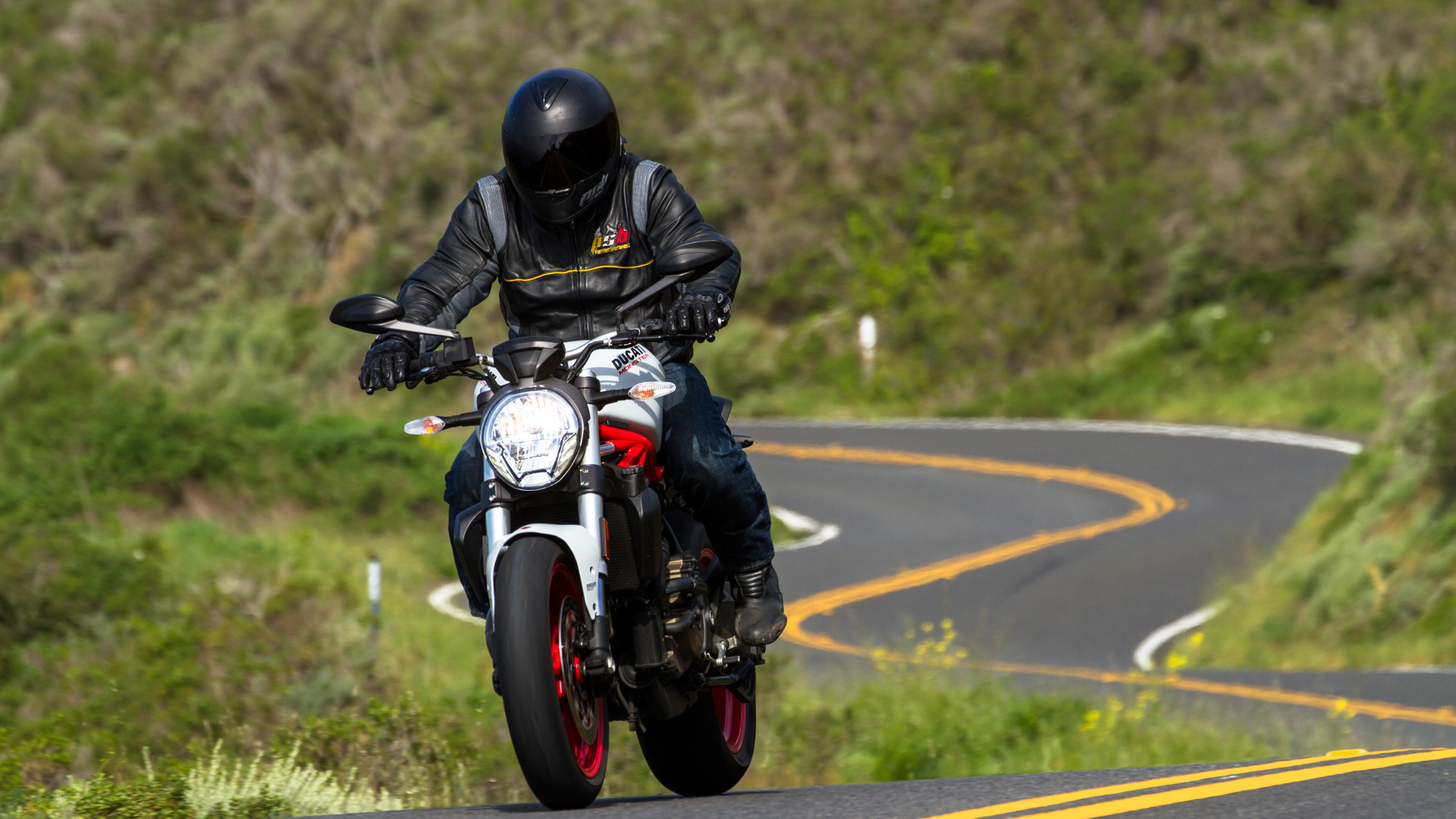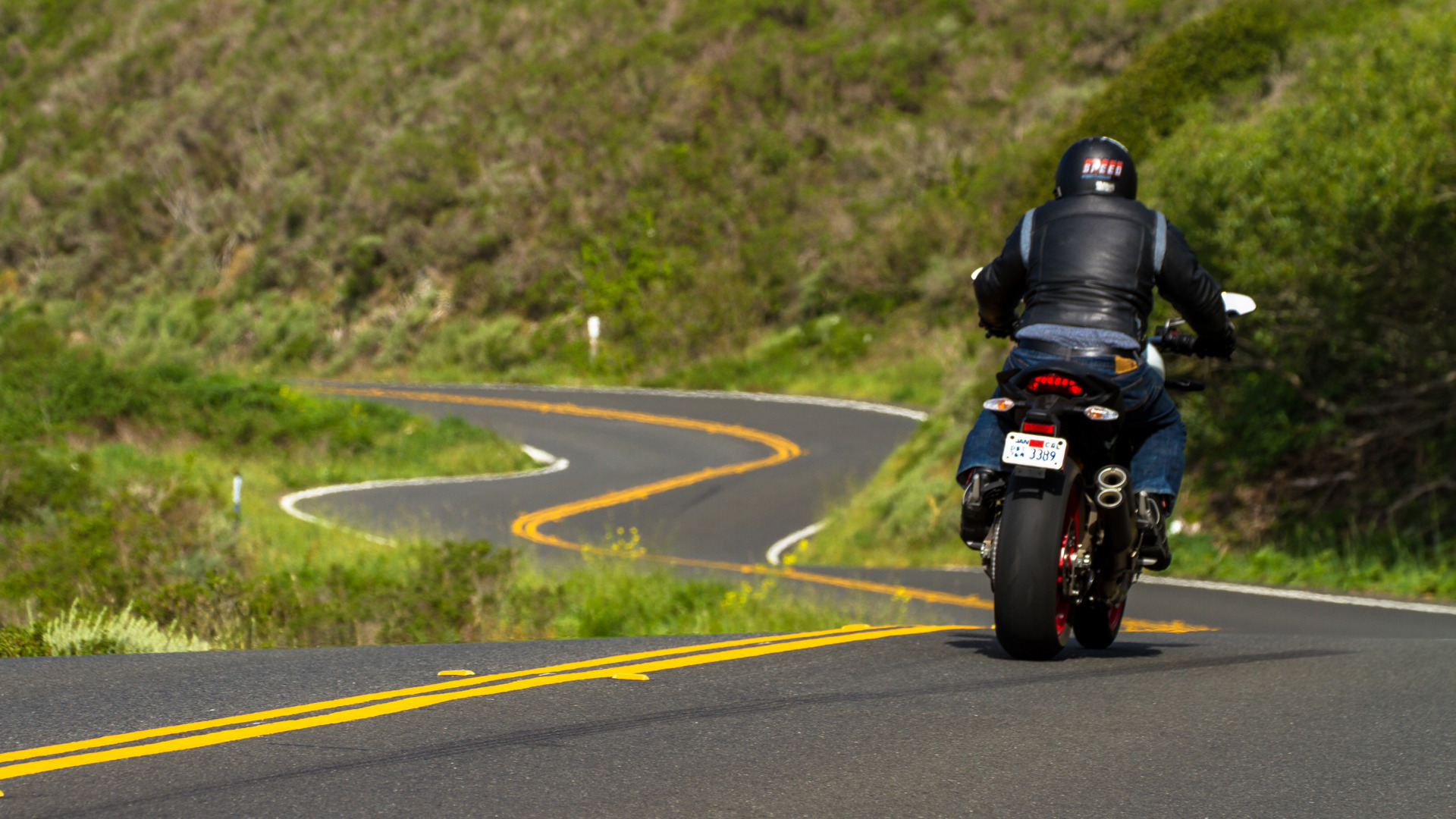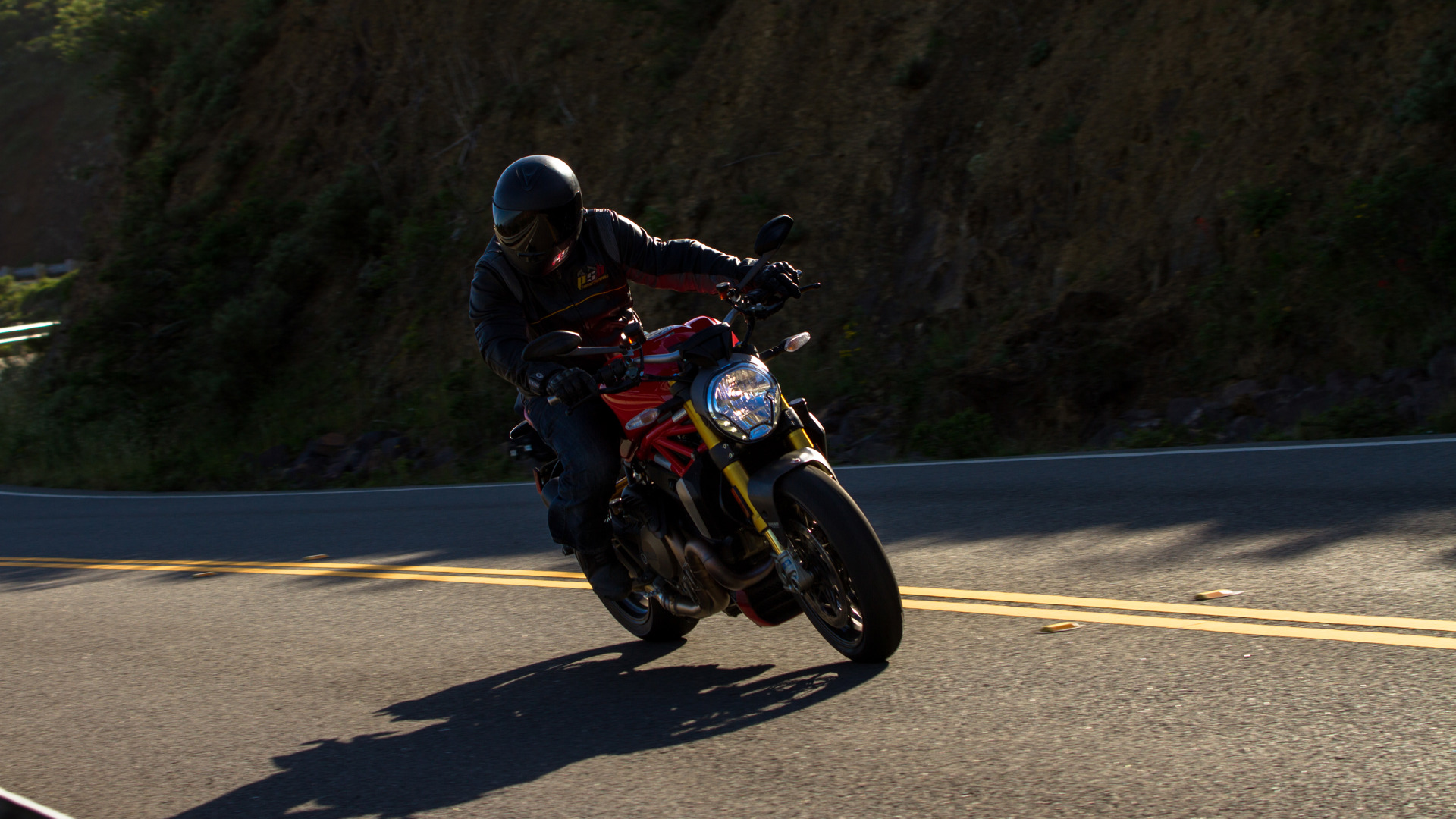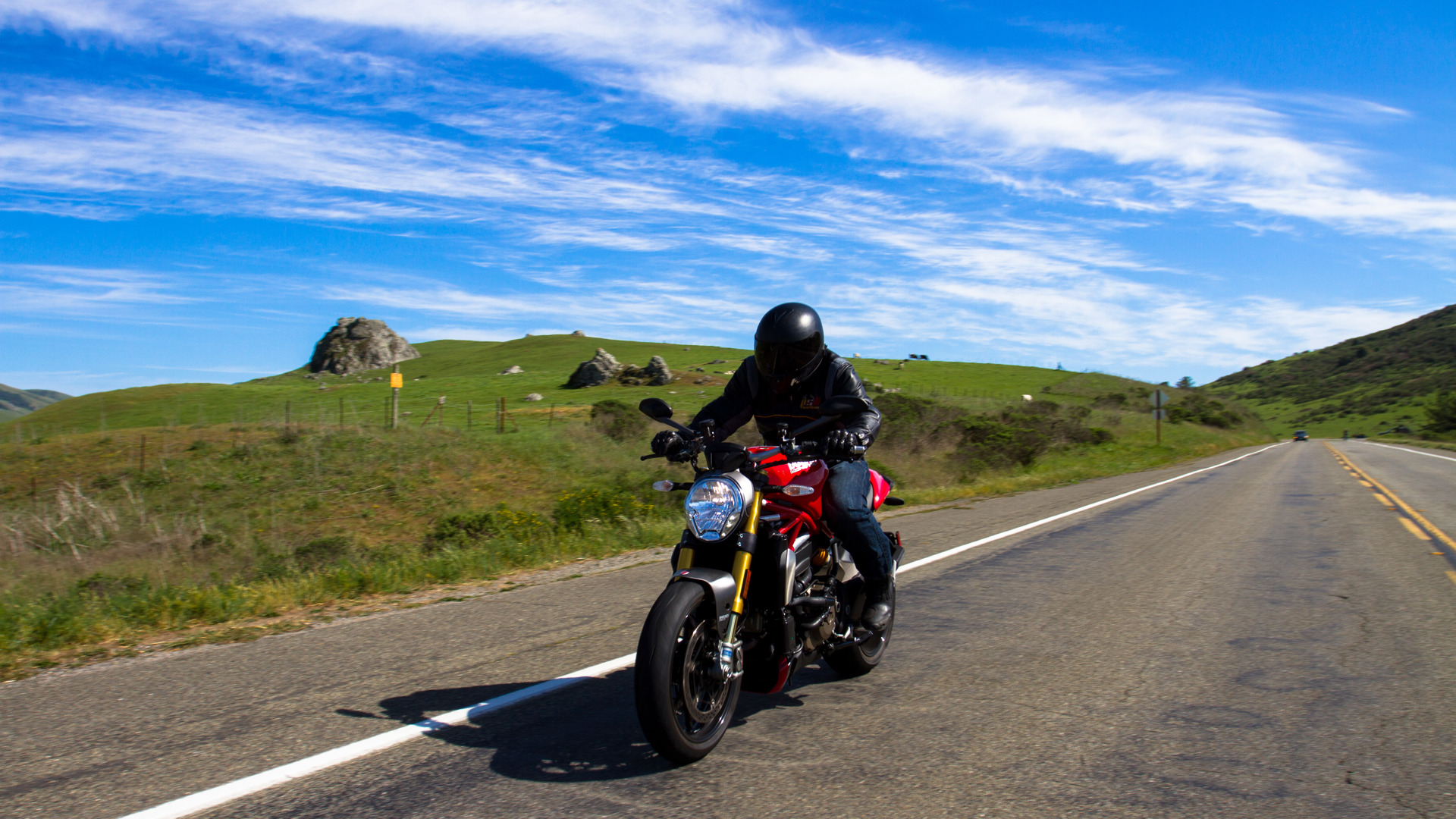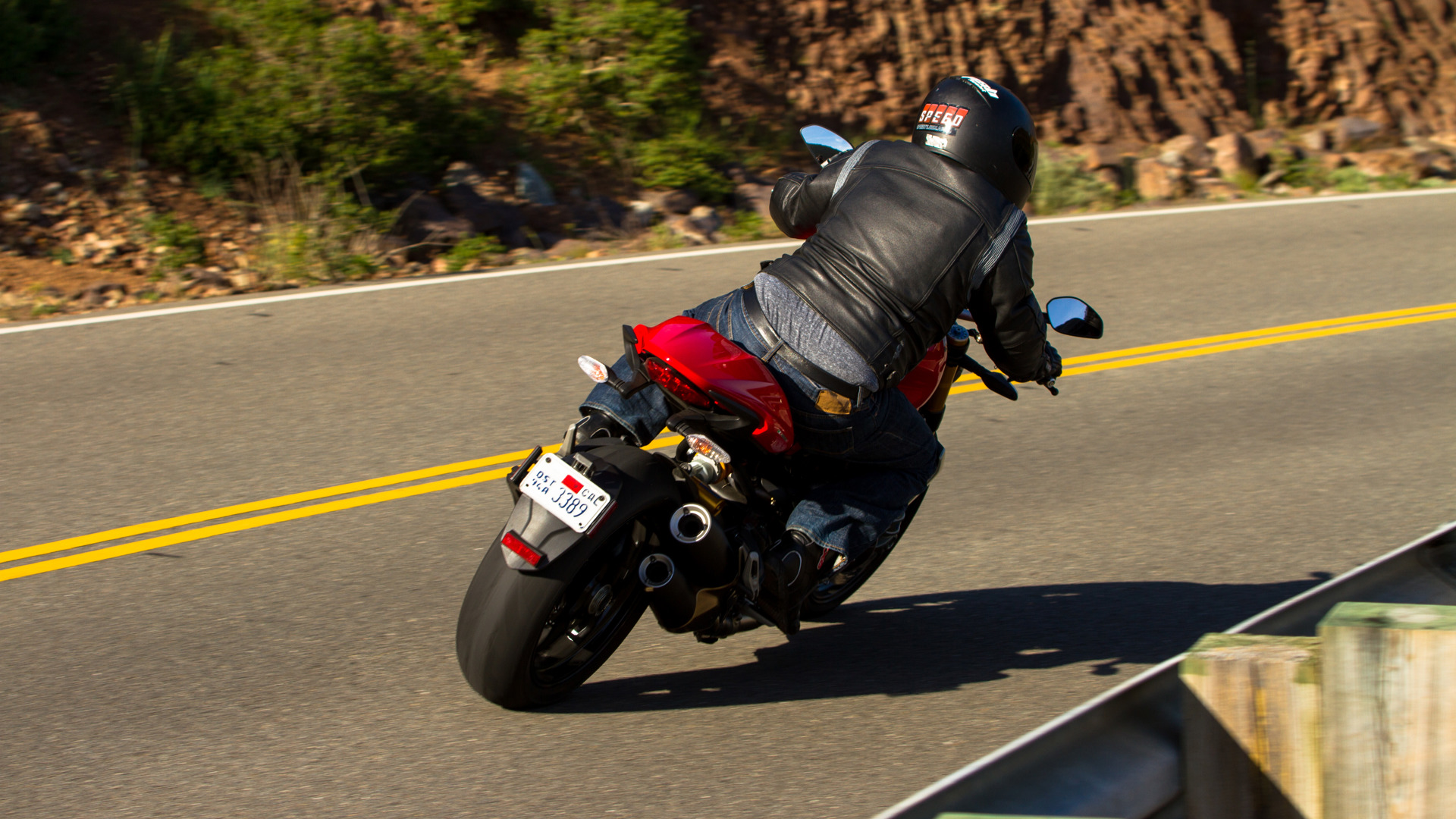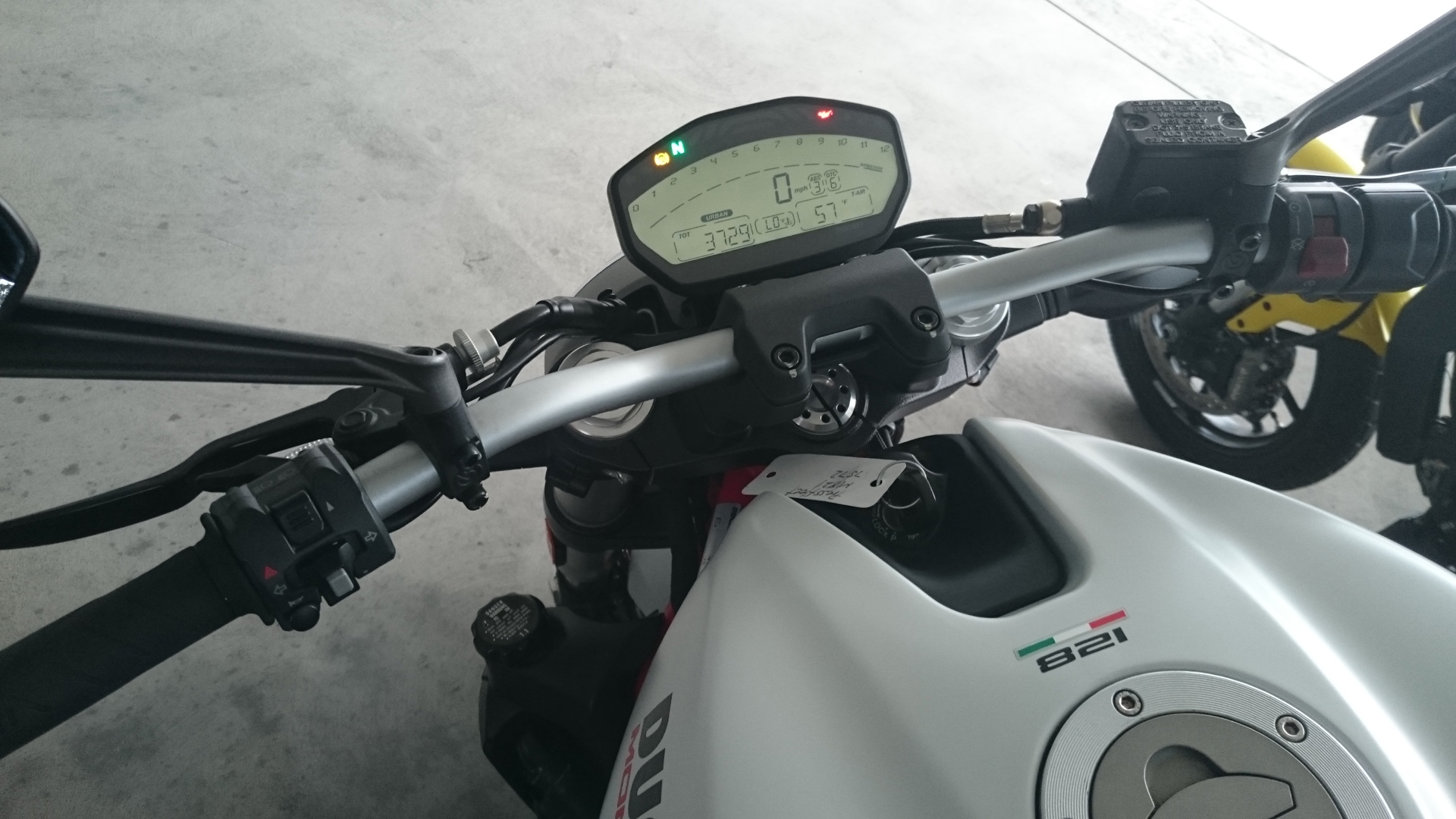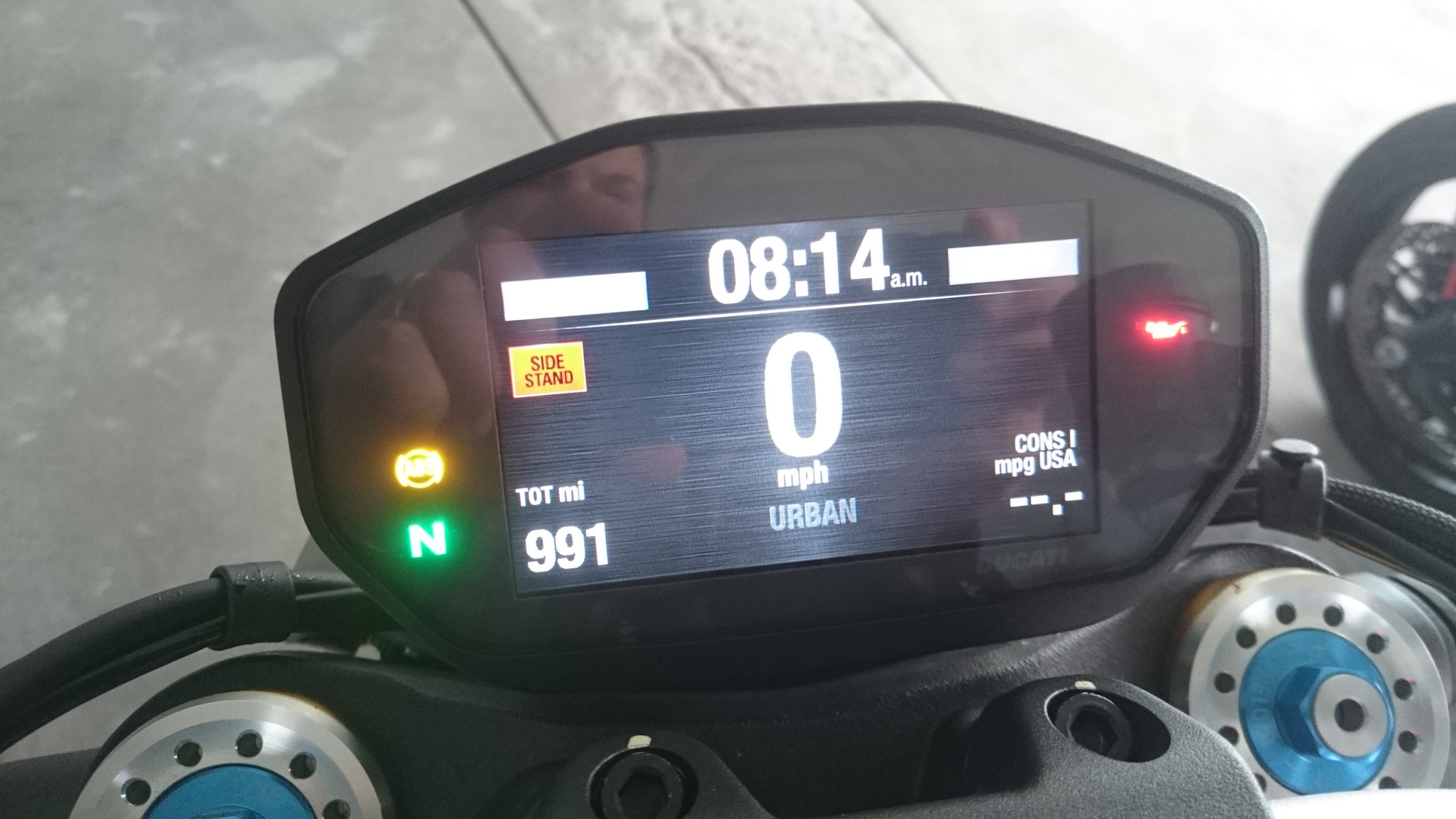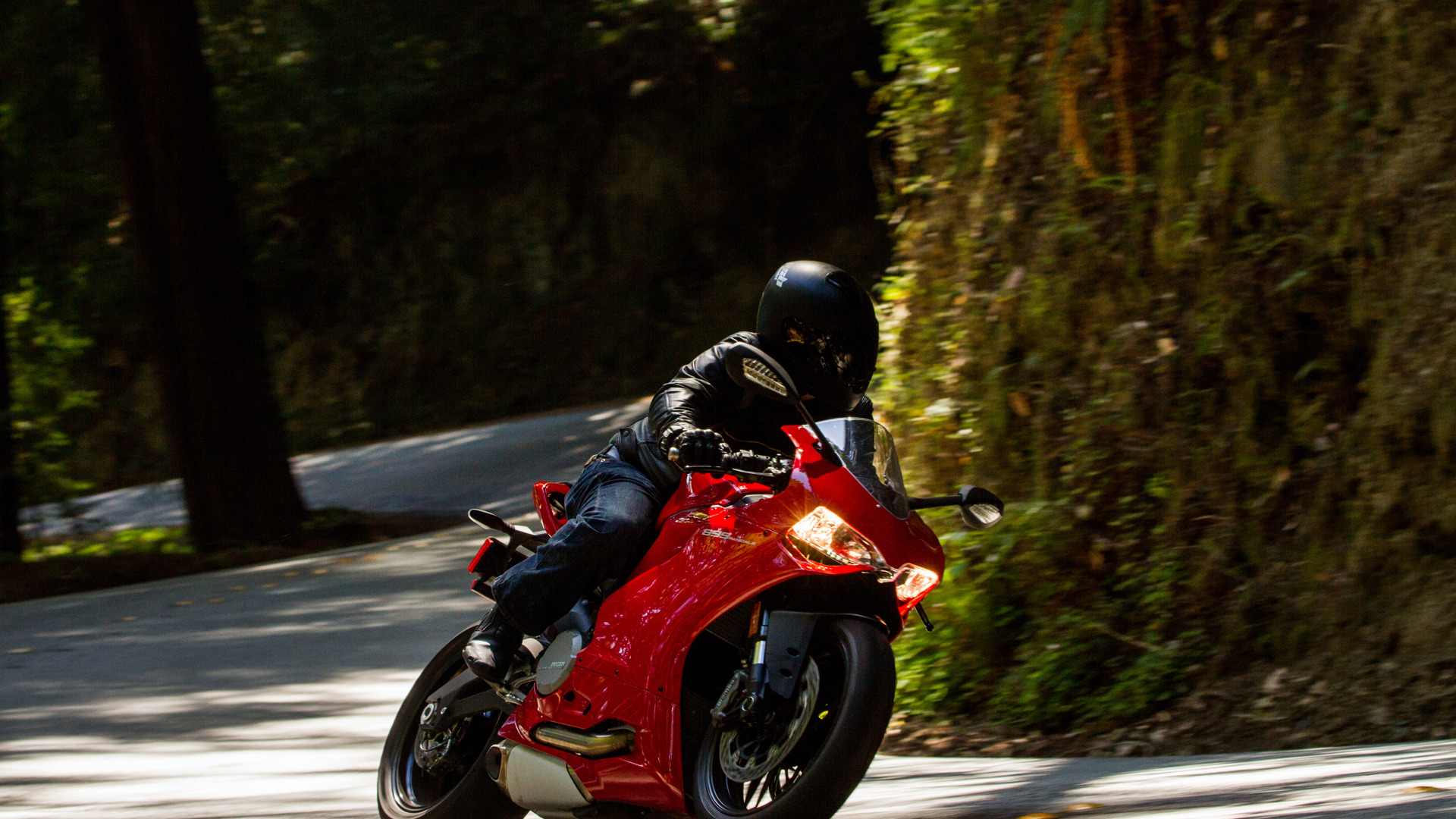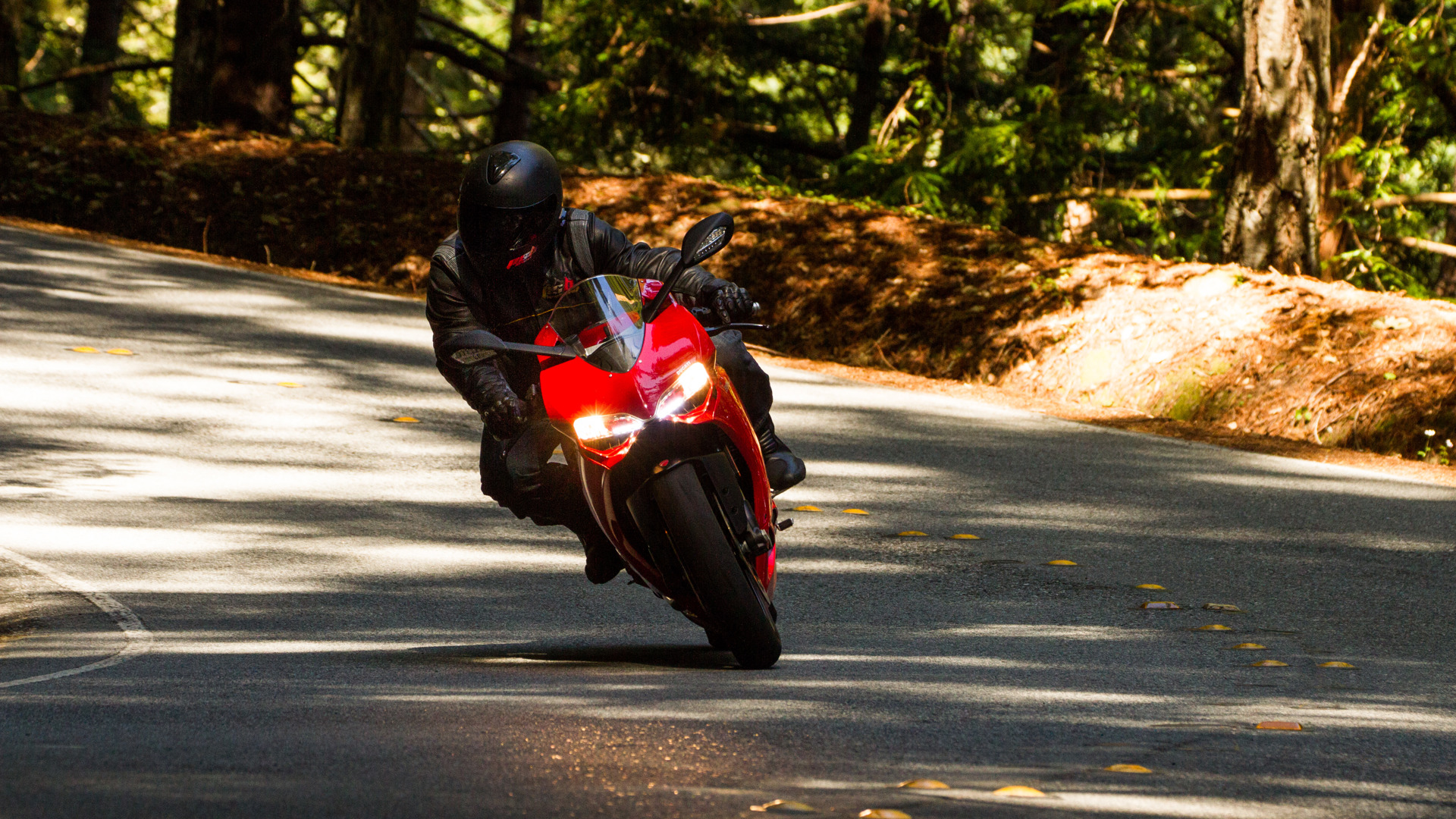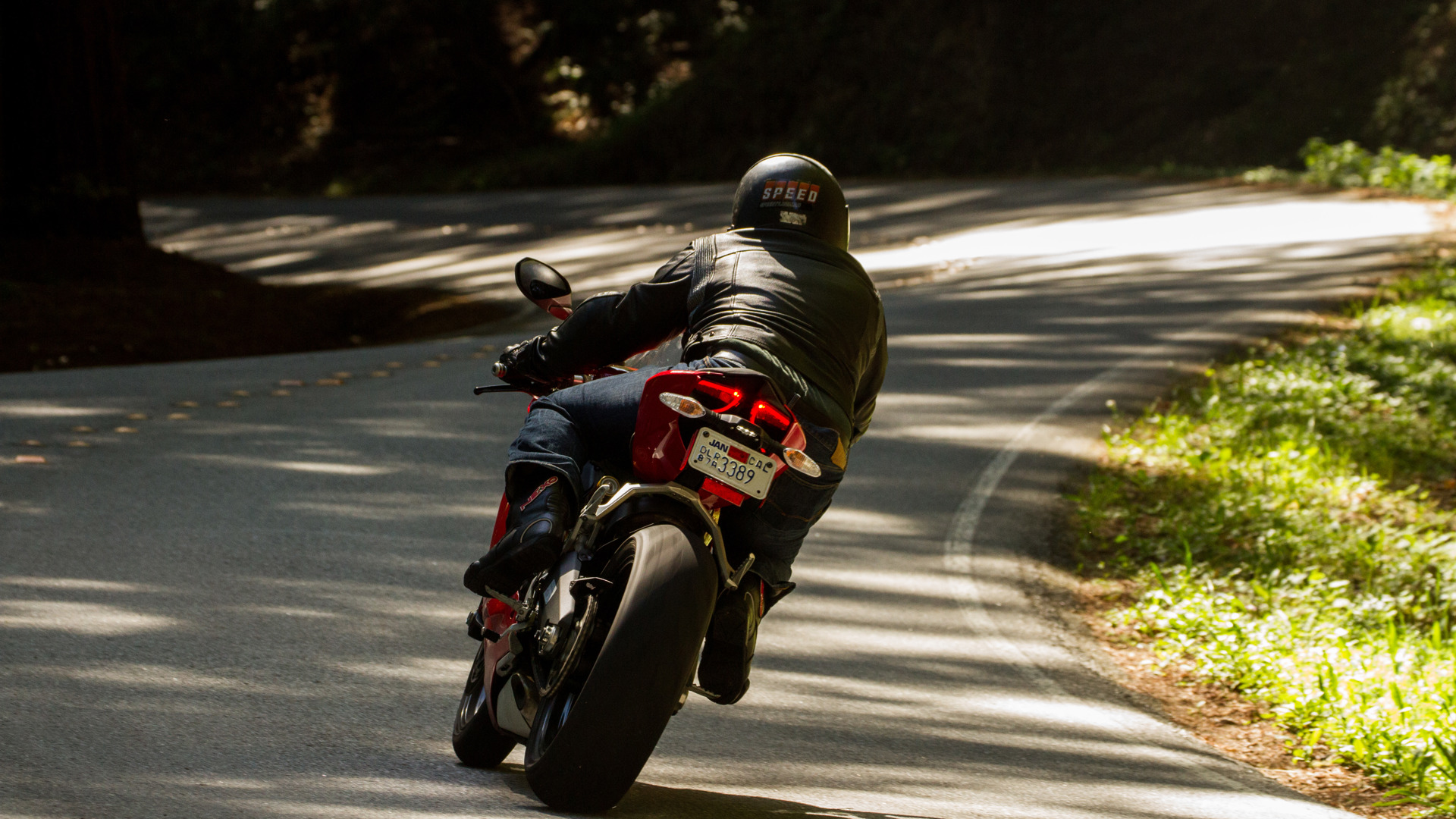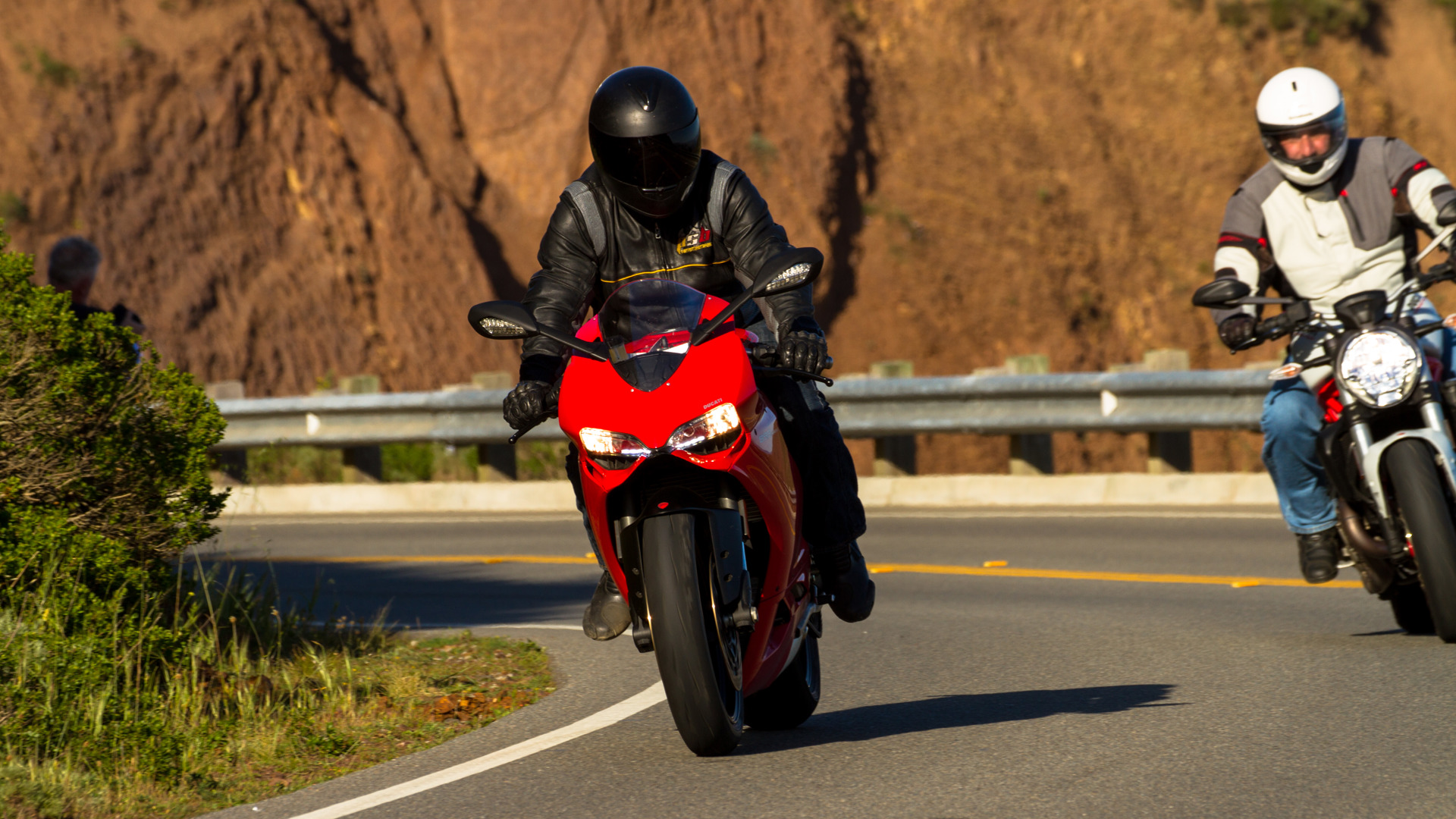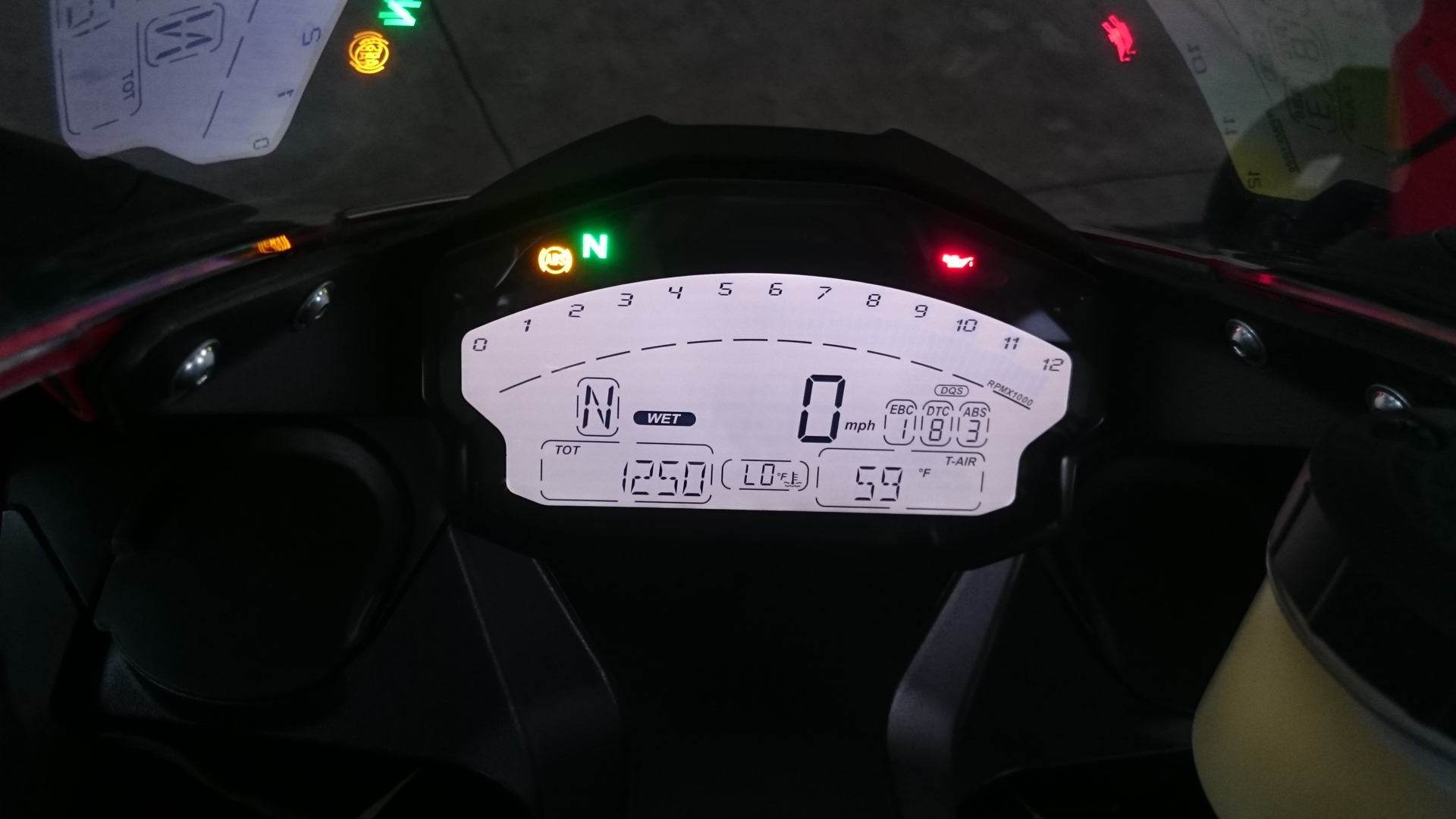Review by Jacob Black, photos by Jacob Black and courtesy of Ducati.
First Ride: 2015 Ducati Line Up
Ducati has a formidable lineup. The Italian marque runs the gamut from dual-sport adventure to naked sports roadster all the way to full-on superbike. There’s even a cruiser in there – though it’s not actually a cruiser. It’s a daunting gang of bikes, and Ducati hand-picked some of the most exceptional roads to expose us to their 2015 model range.
We had two days of loops based in and around San Francisco in which to get acquainted with Ducati’s best. Well, some of the best. Missing from the lineup was the 1299 Panigale, the Multistrada and the Streetfighter, for which Ducati has other plans.
On the list was the 899 Panigale, the 821 Monster, 1200 S Monster, the Hyperstada, Hypermotard SP, Diavel Carbon and the newest model to the Ducati full line, the retro-inspired Scrambler. All come with multi-stage adjustable ABS, and all but the Scrambler came with Ducati Traction Control – an eight-stage traction control system that limits rear-wheel spin. DTC and ABS come in three or four preset configurations, Sport, Touring, Wet and Race (on select models only). Each riding mode dials in a predetermined amount of both ABS and DTC, and can be customized by the rider.
While others would stake their best possible claims for the title, one bike stood out as “Most Surprising”.
2015 Ducati Scrambler
The newest, most cheerful bike of the Ducati range, the Scrambler is also the cheapest – though “cheap” is not really the right word. At $9,299 the Scrambler represents the lowest entry point to riding a Ducati and it’s a screaming buy. In fact, the Scrambler might just be the most fun Ducati of all time.
With an air-cooled, 803 cc L-Twin, Desmodromic two-valves-per-cylinder engine good for 75 hp at 8,250 rpm and 50 lb-ft of torque at 5,750 the Scrambler was the least potent of the bikes on hand – on paper at least. The 186 kg wet weight helps the Scrambler keep up off the line, and highway speeds are well within this little retro-rocket’s range.
In the twisties, it’s the bigger bikes that need to watch out. A particularly fast colleague claimed he was faster on the Scrambler than the Panigale 899 when the road got properly winding, and the gouge marks on the exhaust pipe confirmed his diagnosis. Every single journalist on the event was wowed by the funky Scrambler, and I personally was shocked by how capable and how much fun it is.
The wide bars and low (790 mm) seat height give a great sense of control – and there’s an additional 770 mm seat available as an option for the truly short. It’s those small dimensions that make the Scrambler one of those rare bikes that can actually draw people into motorcycling.
It looks cool, like an old flat-track racer, but it also looks manageable. It’s easy to ride with enough throttle to keep you happy but not enough to get you in deep trouble. Ground clearance becomes an issue for more experienced riders, but the occasional peg/exhaust scrape won’t dull your love for the Scrambler – hell, it might even add to it!
And there’s already evidence the Scrambler has acquired a cult following. Not only was it the one bike I caught most drivers and pedestrians eyeing off, but during our time in San Francisco we ran into one man in a carpark who’d just thrown down his money on one. He was incredulous, livid even. “How did you get those?! I just put my money down today!” He was salivating. I can see why. Canadian buyers should see the first Scramblers delivered in May.
2015 Ducati Diavel Carbon
“Don’t call it a cruiser,” says the Ducati marketing team – and to a large degree I can see their point. The Diavel is an enigmatic bike, one which will turn the heads of the Cruiser set but won’t be met with derision from the sportbike set either.
The Diavel is heavy at 234 kg wet, but flings itself around with a joyous disregard for its own heft. The tank and the rear seat rise dramatically out above the seat, giving you the impression you’re sitting in the Diavel, not on it, and the foot-down standard control placement is a nod not only to comfort, but genuine sporting intentions.
Clearly, Ducati expects this bike to do more than just chill out on highways. The 162 hp/96 lb-ft, Testastretta 11-degree L-Twin packs four Desmodromic valves per cylinder and dual spark. The engine note is typical Ducati-twin orchestra and the Diavel pulls hard – especially when given large amounts of rev and throttle percentage.
In the corners a quality rider could easily play “embarrass the sports bike”, though I found it difficult at times to get the Diavel to change direction rapidly. Regardless, the Diavel tracks beautifully and maintains its composure over rough ground, offering cornering confidence and composure that encourages you to push harder. While the weight of the bike makes switching direction a workout, the Diavel will happily give up more lean angle when a corner gets tight all of a sudden.
Ground clearance is good, and the pegs have plenty of fold in them, so you could let them scrape if that’s the sort of thing you enjoy – and it should be.
2015 Ducati Hypermotard SP
The Ducati Hypermotard on deck for this event was the top-of-the range SP edition. It is tall, flickable, fun (really, really fun), but it requires your attention and also some suspension setup before riding.
I found the forks under-damped for me and with so much travel occasionally found the SP pogoing into corners. It can be disconcerting when the front won’t settle and you want to turn in. There are two solutions to this problem, both addressed by the Hypermotard. One: You can adjust the damping in the forks; two: you can just back it into corners everywhere you go like the Super Motard pros do.
In the short time I had there wasn’t an opportunity to adjust the forks, and my skill level sits well below that of your average ‘tard rider – so I made do. I still had a blast, and because my corner entries were so slow I got acquainted with the Hypermotard’s prodigious ability to squirt out of corners like a scalded cat. During one sequence the exit of a corner coincided with a rather large hump in the road and inspired a new hashtag – #accidentalwheelie.
The riding position and the bars allowed for good control even as I wrestled the front end of the 110 hp/66 lb-ft 821 cc SP back down to terra firma.
If your background is dirt, you’ll have a better handle on the Hypermotard’s body-forward and up-high riding position and the sorts of weight distribution that bring out its best. If you do have an affinity for a steroid-infused version of a motard then you’ll want to access Ducati’s DTC riding modes and set it to “Racing” with the ABS at its lowest level and traction control at the second-least aggressive setting. It’s easy enough to do with the menu buttons integrated into the indicator cancellation button, and you’ll be happier if you do.
2015 Ducati Hyperstrada
A de-tuned, softer and more practical version of the ‘tard, the ‘strada is easy to ride and offers Ducati a chance to get in on more adventure-sport oriented riders.
As we learned in San Francisco, it’s also the sort of bike that can help a newer rider gain added confidence despite its high seat height. The 2015 Hyperstrada is well behaved and comfortable, yet powerful and agile enough to take on any road.
The shower of sparks ahead of me demonstrated the ground clearance issues generated by the sidestand – but that can be removed if you’re a heavier rider who enjoys lean angles. The panniers are downright beautiful and would look good as carry-on luggage for any trip to Milan.
The Hyperstrada was the softest bike of the bunch however, and also seemed to have the most intrusive ABS – even at its lowest setting. So if you value high-speed corner carving but enjoy the dual-purpose sort of format, maybe look to the Hypermotard instead.
2015 Ducati Monster 1200 S and 821
These two members of the same family will satisfy different types of riders. The 1200 S packs a brutal 145 hp/92 lb-ft 1200cc (go figure) 11-degree L Twin with four valves per cylinder and dual spark. The engine spins up freely and quickly launches the Monster 1200 S into “hold on tight” mode.
At 209 kg wet the 1200 S is only 3.5 kg heavier than the 821 and shares similar dimensions. With 31 mm less wheelbase, the Monster 821 is a little quicker to change corners, and it feels from the seat like the 1200 S carries more of its weight up high.
Still, the 1200 S will shake its head out of corners as you get on the power and there is no shortage of handling ability offered up by the 43 mm upside-down forks and adjustable progressive rear shock.
If you want something a little more tame, the 821 gives you the same size and dimensions with similar on-road manners, but a little less punch at 112 hp and 66 lb-ft of torque. It’s enjoyable, but when you factor in the extra power and the aesthetic improvements – including a beautiful single-sided swing-arm versus a double-sided swingarm on the 821 – then the 1200 S sticks out for us as the Monster to pick.
Then again, at $5,000 less, the 821 might offer the best bang for your buck – just never ride one back to back with the 1200.
2015 Ducati Panigale 899
The Panigale range of superbikes from Ducati are striking, beautiful, breathtaking motorbikes. The taillight treatment alone is a thing of pure beauty. Like so many things of beauty, the Panigale 899 is a demanding and unforgiving companion – and it’s better for it.
I cut my teeth on sport bikes – all I rode for more than a decade were ‘crotch-rockets’ – so I feel most at home with my head down, arms in tight and feet back. The Panigale fits my 5’6” frame like a glove, but protests at the extra weight I’m carrying. Turn-in is blindingly fast, and the powerful brakes will have the rear wheel squirming as you set up for the next turn.
The Panigale rewards commitment but will buck and dance around underneath you if you’re too timid. Lock it on line and the 899 will stay there but what feel like minor corrections on other bikes in the range will be amplified by this extremely lively chassis. On the track, the 899 is a scalpel, but on the road it’s almost too sharp. Almost.
The 148 hp and 73 lb-ft come on at stratospheric revs, torque peaks at 9,000 rpm, horsepower at 10,750. A full set of electronic aids help tame the beast, with Engine Braking Control, and Ducati Quick Shift helping to manage downshifts and keep the back from snapping out under heavy braking. The quick shift makes you look like a hero as you rifle through the sequential box. In “Race” mode experienced riders will find it easy to slide into and out of corners, but the Ducati safety nets will keep right-wrist warriors from high-siding themselves into hospital.
The result is a good mix between a lively, effervescent chassis and a manageable yet engaging powertrain. In fact, the most dangerous moments come not from powering out of a corner, but when I was cruising past my reflection in a row of shop fronts – it’s hard to be beautiful.
Pricing:
2015 Ducati Diavel Carbon: $22,695
2015 Ducati Hypermotard SP: $16,195
2015 Ducati Hyperstrada: $14,295
2015 Ducati Monster 821: $12,490
2015 Ducati Monster 1200: S $17,495
2015 Ducati Panigale 899: $15,995
2015 Ducati Scrambler $9,299
